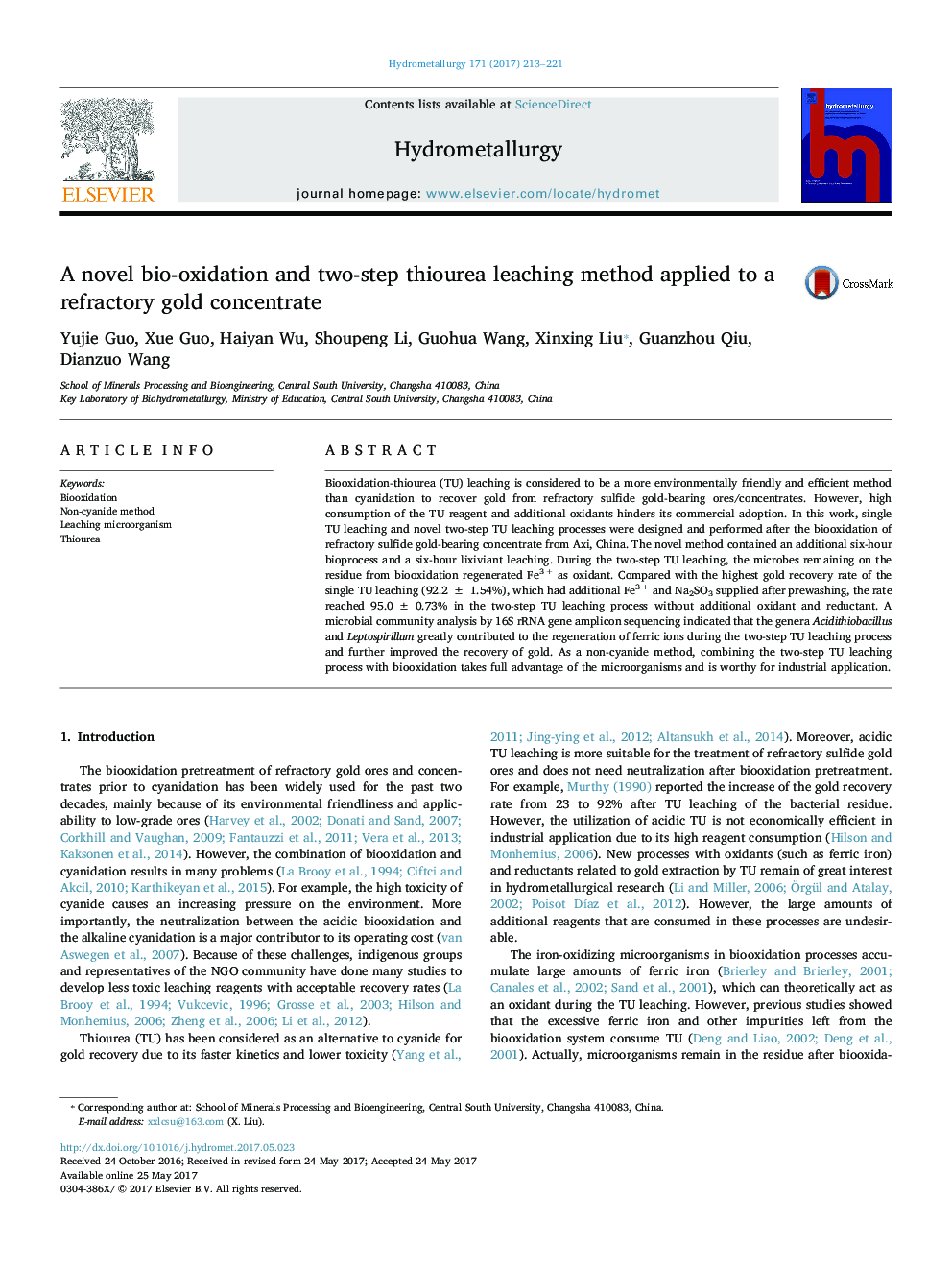| Article ID | Journal | Published Year | Pages | File Type |
|---|---|---|---|---|
| 4769280 | Hydrometallurgy | 2017 | 9 Pages |
Abstract
Biooxidation-thiourea (TU) leaching is considered to be a more environmentally friendly and efficient method than cyanidation to recover gold from refractory sulfide gold-bearing ores/concentrates. However, high consumption of the TU reagent and additional oxidants hinders its commercial adoption. In this work, single TU leaching and novel two-step TU leaching processes were designed and performed after the biooxidation of refractory sulfide gold-bearing concentrate from Axi, China. The novel method contained an additional six-hour bioprocess and a six-hour lixiviant leaching. During the two-step TU leaching, the microbes remaining on the residue from biooxidation regenerated Fe3 + as oxidant. Compared with the highest gold recovery rate of the single TU leaching (92.2 ± 1.54%), which had additional Fe3 + and Na2SO3 supplied after prewashing, the rate reached 95.0 ± 0.73% in the two-step TU leaching process without additional oxidant and reductant. A microbial community analysis by 16S rRNA gene amplicon sequencing indicated that the genera Acidithiobacillus and Leptospirillum greatly contributed to the regeneration of ferric ions during the two-step TU leaching process and further improved the recovery of gold. As a non-cyanide method, combining the two-step TU leaching process with biooxidation takes full advantage of the microorganisms and is worthy for industrial application.
Keywords
Related Topics
Physical Sciences and Engineering
Chemical Engineering
Chemical Engineering (General)
Authors
Yujie Guo, Xue Guo, Haiyan Wu, Shoupeng Li, Guohua Wang, Xinxing Liu, Guanzhou Qiu, Dianzuo Wang,
